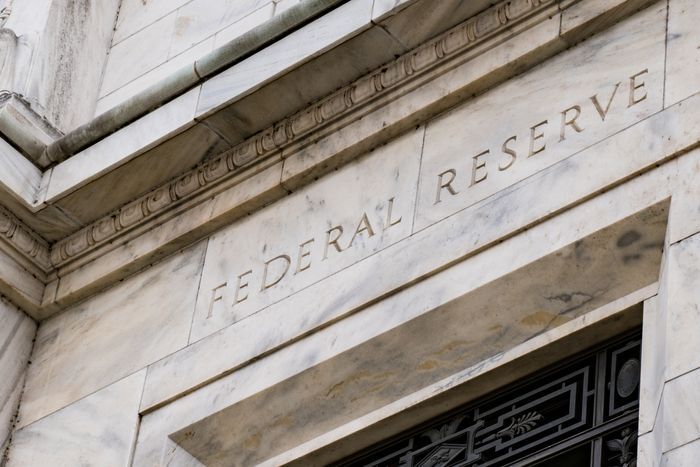
Monetary Policy & Inflation | US

Monetary Policy & Inflation | US
This article is only available to Macro Hive subscribers. Sign-up to receive world-class macro analysis with a daily curated newsletter, podcast, original content from award-winning researchers, cross market strategy, equity insights, trade ideas, crypto flow frameworks, academic paper summaries, explanation and analysis of market-moving events, community investor chat room, and more.
Has the Fed overtightened? Current data on growth or the labour market says no.
However, data weakening tends to start slowly and then accelerate. Consensus almost never anticipates recessions. If they did, behaviours would change and recessions most likely would not happen.
In this note, I try to solve this riddle by assessing Fed restrictiveness through the economy’s ability to withstand an unexpected shock.
Negative shocks, including but not limited to, Fed hikes, hurricanes, or supply chains breakdowns, lower businesses’ cashflows and household incomes. Firms and households can either weather the shock through drawing on their assets and/or by borrowing, or they can cut spending. If enough spending is cut, a negative feedback loop between production and consumption is triggered (businesses’ wages costs are households’ income). Eventually, the economy slides into recession.
Chart 1 shows the relationship between financial resiliency and growth (unemployment and corporate bankruptcies tend to increase in sync).
Access to credit is a key driver of economic resiliency. After the Fed started hiking in March 2022, banks tightened their credit standards (Chart 2). They remain tighter than before Q1 2022 even though the banks started easing them in mid-2023.
Also, banks have seen funding conditions tighten. After the Fed started hiking liquidity, flows to money market funds and the loan-to-deposit ratio rose (Chart 3). The ratio has stabilized since mid-2023 and remains well below pre-pandemic levels.
Domestic bank credit growth is below historical averages outside of recessions, and bank credit is falling relative to GDP (Chart 4).
Yet, on aggregate, neither households nor businesses appear to be lacking credit.
Household credit growth, especially mortgages, spiked during the pandemic but has returned to pre-pandemic levels (Chart 5). Non-mortgage credit growth aligns with historical averages, while mortgage credit growth is roughly back to the pre-pandemic pace. The disconnect with slower bank credit growth could reflect the growing role of non-bank lenders. For instance, buy-now-pay-later schemes.
Despite the pandemic borrowing spike, household debt and the debt service ratio have remained stable relative to GDP (Chart 6).
Nevertheless, signs exist of weakening household balance sheets. Delinquencies are rising across all loan categories, except student loans where the Biden administration has implemented a forbearance program preventing late loans being recorded as delinquent (Chart 7). Serious credit card delinquencies are above pre-pandemic and rising with even mortgages, traditionally having the lowest delinquency rates, seeing a fast increase in transitions into delinquencies.
This is largely normalization from the pandemic, when government-sponsored forbearance and exceptional transfers lowered delinquencies to an unsustainable level.
Also, worsening household credit quality implies lower household resiliency, even though the credit issues could reflect poor lender risk management and business models.
Lastly, a much lower savings rate post-pandemic may have little room to fall further should a negative shock hit households.
Like households, corporates have not been deprived of credit on aggregate. During the pandemic, they benefitted from various government and Fed schemes to keep credit markets open. Since 2023, their borrowings have fallen below historical averages, but this largely reflects prior fast credit growth (Chart 8).
In line with households, corporate leverage has been stable (Chart 9).
This stable leverage is reflected in corporate spreads that, until the recent selloff, remained close to pre-pandemic lows (Chart 10). By contrast with households, credit market normalization has not seen worsening large corporate credit quality.
However, this positive picture mainly reflects large corporates with access to capital markets. By contrast, smaller borrowers do not seem to have benefitted as much as large borrowers from government pandemic support. They report tighter credit access since 2021, which seems to have worsened after the Fed started tightening (Chart 11). Signs suggest tighter credit conditions have weakened their capacity to weather negative shocks.
Also, signs indicate small borrower credit quality is weakening. Delinquencies on commercial and industrial loans have been rising at small banks, which tend to lend to smaller borrowers. By contrast, delinquencies at large banks, which tend to lend to larger borrowers, have been stable (Chart 12).
With the Atlanta Fed Q3 GDP nowcast at close to 3% and H1 growth at 3% YoY, it is hard to argue the Fed has overtightened. Yet, economic resiliency has weakened since the Fed started tightening.
Bank credit growth has slowed and, while non-bank lenders have picked up the slack, signs exist of weaker balance sheets and tighter credit access.
Regarding households, weakening credit quality likely reflects normalization from the extreme policy easing during the pandemic. Nevertheless, rising delinquencies imply weaker balance sheets.
Regarding businesses, leverage is stable, and the pandemic-related change to credit quality has been limited. Also, smaller borrowers are struggling to access credit.
These suggest the Fed will be keen to ‘bank’ its progress on inflation and start normalizing. This is why I now expect the first cut in September, with 25bp as my base case, and 50bp if, contrary to my expectations, core Personal Consumption Expenditures continues slowing or the labour market weakens further.
There is long-term risk Fed easing could see a private sector debt build-up, followed in the longer run with an unavoidable retrenchment (the ‘credit bite back’ effect). That does not seem to be a Fed concern for now.
.
.
Spring sale - Prime Membership only £3 for 3 months! Get trade ideas and macro insights now
Your subscription has been successfully canceled.
Discount Applied - Your subscription has now updated with Coupon and from next payment Discount will be applied.